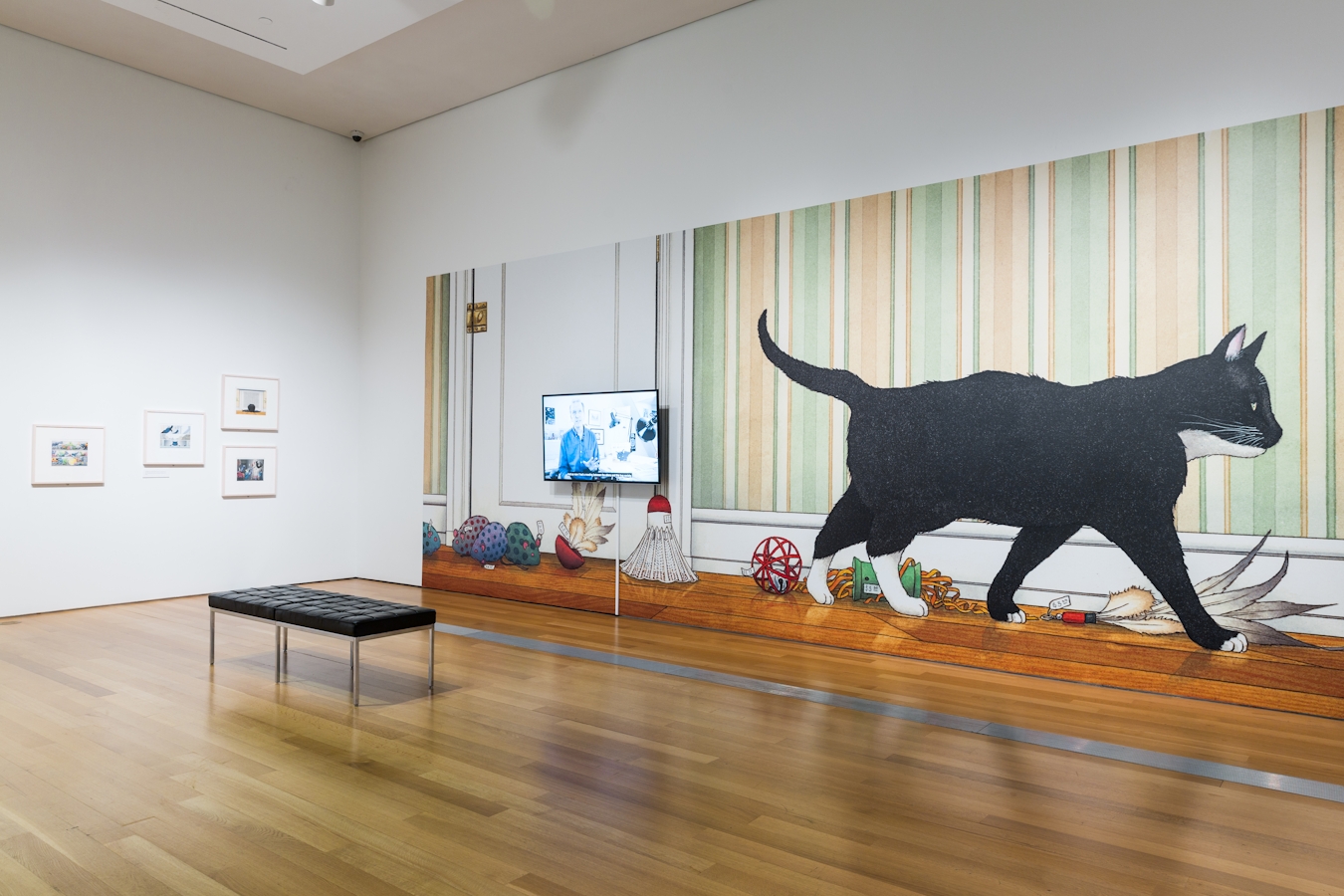David Wiesner & The Art of Wordless Storytelling
David Wiesner & The Art of Wordless Storytelling presents a colorful survey of the career of one of the most highly acclaimed book illustrators in the world.
David Wiesner (b. 1956) is a master of storytelling through pictures and three-time winner of the Caldecott Medal. Wiesner’s body of work explores the complexity of human imagination through richly layered imagery, clever composition, and humor. His many books have delighted readers of all ages for three decades with wildly imaginative tales that capture the joy of pictures and stories.
The exhibition features 70 original watercolors from some of Wiesner’s most beloved books, including the Caldecott Medal winners Tuesday (1991), The Three Pigs (2001), and Flotsam (2006). Examples of Wiesner’s earliest artistic successes are on view, too, as well as sketches and notebooks revealing his time-consuming creative process, which culminates in the enchanting watercolor paintings that anchor the exhibition. Because these original works are rarely seen, the meticulous processes through which Wiesner achieves his seemingly effortless effects are rarely apprehended. Viewing these works in person, as opposed to their reproductions in books, reveals the multiple layers of watercolor that Wiesner uses to create the exquisitely nuanced hues that bring each piece to life.
Wiesner began his career providing illustrations for the children’s literary magazine Cricket in 1979 and then undertook a series of collaborations with children’s book authors throughout the 1980s. Free Fall (1988), Wiesner’s first solo work and his first published wordless book, took him three years to complete. It’s story, which imagines a boy’s sleeping dreamscapes, is contained within one long, continuous composition that morphs from one scene to the next. After it was chosen as a Caldecott Honor Book in 1988, Wiesner determined from then on to focus exclusively on his own visual storytelling.
In the works that came after, including June 29, 1999 (1992) and Sector 7 (1999), he continued to explore visual storytelling, often removing text and thus removing the author’s voice. Wiesner says, “This lets each reader tell the story in their own voice. It puts readers in the position of collaborating in the storytelling process, asking them to use their imagination along with mine.” He hopes viewers will actively engage with his work, making connections and creating their own meaning, an engagement that is particularly important for young children, who develop visual literacy well before they are able to read.
Wiesner’s wordless narratives demand attention and deduction from their readers and encourage expressive language and predictive reasoning skills. Activities within the exhibition for children, families, and adults have been created to further inspire these skills and create fun experiences for visitors of all ages.





















